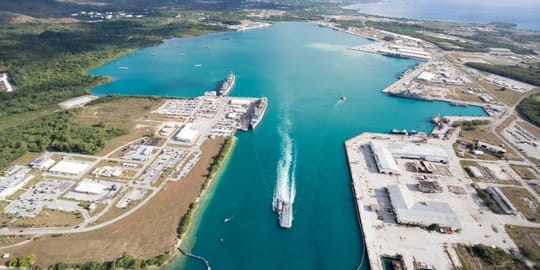Our Perspective
We focus on solving problems that keep other engineers awake at night.
We focus on solving problems that keep other engineers awake at night. Head scratchers. Goat rodeos. Challenges that can only be resolved with collaboration, diligence, and at least a little cleverness. These kinds of projects grab our attention and don’t let go. Sharing the experience of an innovative, practical solution builds long-lasting client relationships that invite future challenging engagements.

Right-Fit Projects
We tell people that if they can find another engineer for their project — then they should. We excel on projects that occupy the dusty corners of infrastructure engineering; projects with seemingly impossible constraints on access, schedule, or performance. We solve complicated problems by breaking them down into bite-sized chunks, navigating around constraints, developing practical solutions, and deploying the resources needed to see our designs through to completion. We focus on “right fit” projects, the projects that can succeed only with such a rigorous approach.

Core Principals
Our success stems from operating under a distinct set of principles.
- We seek uncommon problems. And we do mean seek. We support marine contractors, ground improvement specialists, and heavy civil GC’s who have the most challenging problems and the most at risk. Decades of paying attention to their requirements taught us quickly to recognize problems and mobilize the resources needed for resolution.
- We make practical designs. It’s not a useful design if you can’t build it. We design practical solutions that can be implemented using available equipment, materials, and labor.
- We manage risk by embracing it. Risk should be allocated to the party best equipped to mitigate it, and the Contractors geotechnical engineer is often that party. We collect specialized data and perform the detailed analyses required to take the risk out of your project.
- We leverage our industry’s best thinking. We unashamedly stand on the shoulders of giants. Terzaghi, Rankine, Casagrande, Gerwick, Seed, Goble, Reese. These engineers solved monumental problems and wrote down how they did it. We studied their work and keep a sharp eye out for similarities. Our best solutions leverage what the great ones have already accomplished.
- We show up ready to work. And by ready we mean properly trained, properly briefed, and properly equipped. We show up at your site already carrying the required PPE. And if we’re there before you’ve stood up your program, we write our own program that’ll pass muster with your safety professionals.

Misaligned Project Types
Every project needs good engineering, but Atlas Geotechnical is often not the right choice for some projects. The engineers at Atlas Geotechnical are very strongly connected to capable engineers throughout North America and the Pacific. We are always happy to introduce you and your project to friends and past collaborators who would be the right fit for your project.

In Conclusion
We’ve benefitted from working with extraordinary mentors over the years. We get more knowledgeable with every engagement and (hopefully) wiser with each problem solved. As a result, our thinking about geotechnical engineering has coalesced into our current core principles. Should they change, it’ll be because of the experiences we collect solving the hardest problems with the best group of clients on earth.